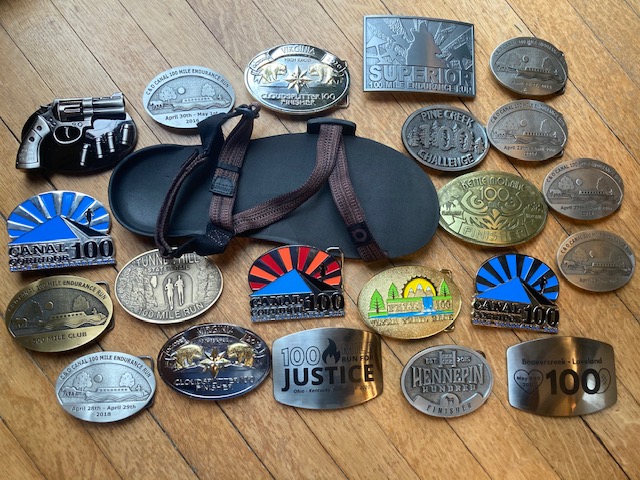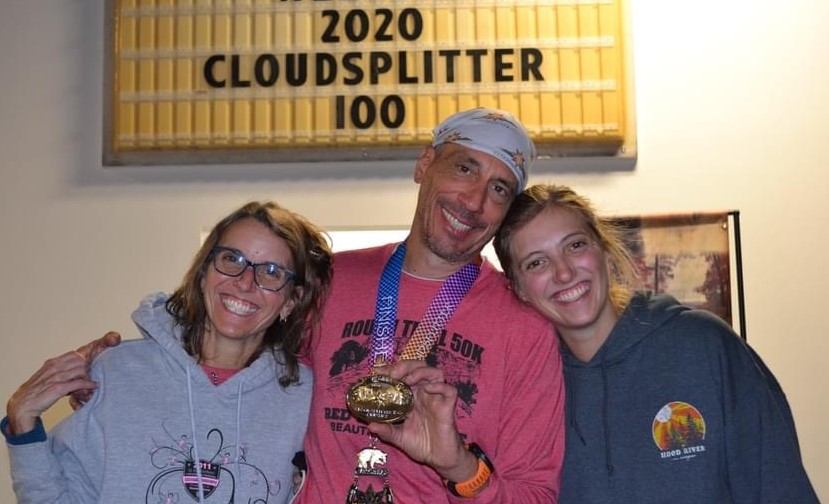December 1, 2020
At my first 100 mile endurance run attempt in April of 2014, with Xero kit huarache style sandals on the mostly gravel tow path of the C&O Canal 100 Mile Endurance Run, I realized at about 26 miles that I would need a bit more protection underfoot and switched to light, minimalist shoes. Near 95 miles, each step felt like “shards of glass” in my feet. The intense physical discomfort, combined with joy and pride were conflicting sensations. I was so low on fluids that I resisted an urge to let tears flow! l knew I would finish the race and return. I’d found a wave to ride!
The 2020 C&O 100 was cancelled due to the pandmeic, which put a hold on my streak of finishes at six in a row. In 2014 I learned much by pushing through the 100 mile barrier in roughly twenty eight hours and one full spin of earth! After the long drive home, I put a video together called, “Top Ten Tips For an Easy 100 Mile Endurance Run”. That content is general and timeless, so I’ve used the same ideas to complete 18 official 100 mile races, plus two “do it yourself” 100 mile runs for a total of about 60 official injury free ultra marathons in roughly nine years.

During 2020, I ran three 100 mile events wearing only Xero’s on my feet for the first time. Here are my top nine tips:
- Physically, mentally and emotionally prepare to self propel for 100 miles. Methodically build your endurance until you can run ten to eleven miles for ten consecutive days, injury free. In ultra running, strategically walking for challenging trail conditions, steep hills or recovery is normal. To “run” in the context of a 100 miles implies self propelled forward motion. Most of us have spent too many hours seated. I’m using a stand up desk and bare feet now and recommend runners sit less, stand more. These “simple” methods can help us heal muscle imbalances, as we simultaneously rehab and condition our bodies. Some of our muscle imbalances likely came from wearing too much on our feet! Breaking daily miles into multiple shorter distances such as two runs per day can help keep your technique strong, thereby lowering risk. This idea can be adjusted for other goals and is a reasonably low risk way to build endurance.
- Less is more relative to your feet. The least protection for the conditions will give your body the environmental sensory feedback you need, so long as you are aware. Athleticism is about awareness. Tune into the biofeedback from all body parts and respond accordingly. As you run more, you may realize your feet are sort of along for the ride. I’ve watched a quadruple amputee running a 50K trail race demonstrate this concept. We move primarily from our core as all body parts are leveraging synergistically while letting gravity assist. Everything you do matters when preparing for a 100 event. What you wear on your feet at all times matters. For ultra marathons, my favorite Xero sole protectors are Genesis, HFS, Prio, Speed Force and Z-Trails.
- Train or spend time purely barefoot if you can do so safely. During Ohio Winters, I love to run pure barefoot indoors or barefoot on a treadmill. To start on the treadmill, minimalist shoes or socks help with the transition. For warmer weather, barefoot gardening or running on nice grassy areas is wonderful. Washing dishes barefoot by hand with good posture and awareness of breath is something I consider cross training. Distance running done with proper posture and awareness is a form of yoga. True yoga is meditative. Running and meditation are great for body and mind. You can improve your brain health at any age.
- Love your feet! Massage the feet regularly and learn about reflexology. Roll your feet on a golf ball, and consider getting a therapeutic massage tool for general use, and especially for your feet. Take great care of the skin on your feet. Before a long ultra marathon, particularly when the Fall air is dry, I use plant based skin care products and wear socks more frequently. Toe socks are generally best for long runs, as they tend to move less underfoot which creates less friction. Less friction on your feet is key to avoiding blisters and overuse issues. Running form, trail conditions, socks and footwear all need to be mindfully managed. Application of skin care products to the entire foot, before and often during ultra events is important. If you do this correctly, you are more likely to experience the joy of finishing 100 miles on a runner’s high, running “negative splits” (faster than earlier miles). This is a feeling I’ve been chasing since experiencing the longest runner’s high of my life at that first 100 mile race. There’s nothing like coming in really strong, feeling great, like Superman, or Wonder Woman at 100 miles.
- The focus it takes to run 100 miles is a gift to yourself and a way to become stronger and better able to help others. If pebbles get in your shoes or sandals, or if you feet are hot, use that feedback to your advantage. For example, if you are finding pebbles are getting underfoot in your sandals or into your shoes, try to alter your running to light, smooth and easy in such a way that pebbles are no longer moving enough to aggravate you. Again, less friction with the environment is good for you. Be aware that people lose a significant amount of excess body heat via their feet! I tend to run in sandals, sans socks. This requires practice of course, but lessons are to be had along with conditioning. When it’s cold be aware that replacing a pair of Xero Z-Trails with Xero HFS and socks will help keep you warmer in general. You can then tie in varying weights of gloves, long pants, shirts, quarter zip jerseys, jackets with adjustable wrist sizes to help manage body temperature. Seemingly tiny adjustments, such as covering or uncovering the ears via a thin buff can make a difference in managing body temperature, something I believe to be vital for a 100 mile race. Be aware of how your foot protection works with everything else. I have never used music during an ultra marathon, as there are so many things to focus on, including other runners, volunteers, weather, elevation, trail conditions and the infinite feedback from your own body.
- Completing 100 miles takes strategy. Select a first 100 mile race that plays to your strengths and think offensively and defensively to “win” the game. A race in a special place, during a favorite season, or with beautiful views should help. Focus on your positive goals, yet be aware of potential pitfalls to help avoid setbacks or work thru them. Many things need to go right and you are managing that process. Think of running 100 miles as a puzzle you solve. If you have a favorite pair of Xero’s that is well worn, realize that a fresh pair of the same model will function differently for various applications. Have alternative shoes and socks on hand for your race. Typically there are drop bags for you to access gear at ultra marathons. And slip a pair of socks into your vest if you might need them out on the trail. Be ready for unexpected weather. Often there are microclimates in the remote and varied terrain of many ultra marathons.
- Know your “whys” and focus on them. Why are you running 100 miles? Why are you wearing minimalist footwear? Maybe you seek a better understanding of yourself and humanity? I run in part as a simple expression of what humans are at their primal core, runners . We are empathic, cooperative beings ideally suited to covering great distances on our feet. Maybe you want to prove to self and others that less is more? Perhaps you want to get your body’s muscles back in balance? The more I run, the longer my list of “whys”. I experience more of the physical world, while meeting more like-minded people. My “tribe” grows. If you do this, expect unintended positive consequences.
- Most runners will build up to 100 miles via marathons, 50K’s, 50 milers, and 100K’s. Depending on your fitness and goals, you may wish to train barefoot and in Xero’s while running a 100 mile race in something with a bit more protection. This may seem contrary to the title of this blog. However, I ran quite a few 100 milers before I was ready to tackle one in Xero’s for the full distance.
- Keep it fun. Learning to laugh at “productive discomfort” is vital to a long-term upward spiral in wellbeing via ultra running. Dancing on that fine line of pushing into productive discomfort while avoiding injuries and setbacks is part of my ongoing process. It’s a privilege to willingly put ourselves thru these tests of endurance. An attitude of gratitude relative to the many volunteers needed to make these races happen is important. Practice VMR; Visual Motor Rehearsal. Olympians have used this process of imagining their desired experience as if it’s already been completed. Avoid thinking about what you don’t want and focus with positive emotions on what you do want. Realize that everything is energy. We are incredible bundles of energy, what separates us from rocks, dust and other life is our higher level thoughts and emotions. Seek to make them positive and fun! Running can transform you this way, helping you operate on a higher frequency.

Below are some applicable videos from my YouTube channel. Please see my link to Xero Shoes website below the video links and thank you for your time.
There are many more videos relative to ideas for becoming an ultra runner, improving your wellbeing, etc.
#PaidXeroPartner I am a proud Xero Shoes Affiliate and may receive compensation for referring the Xero Shoes brand